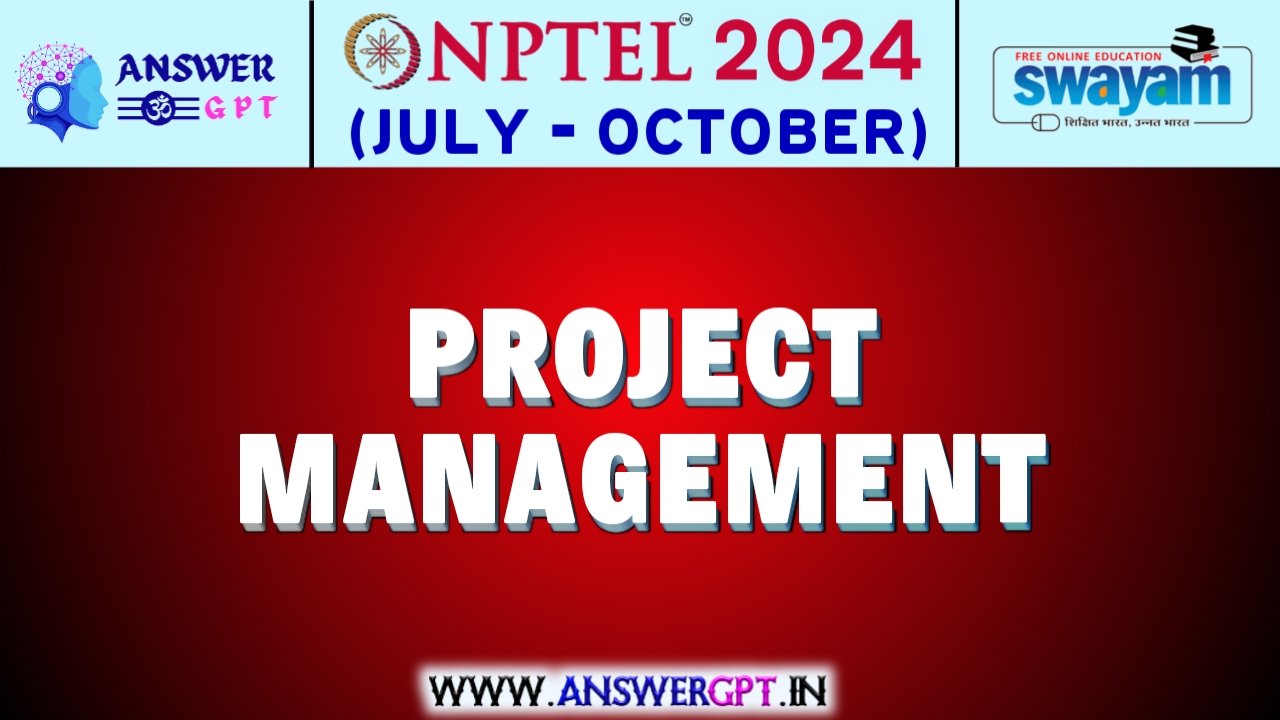Project Management Week 6 NPTEL Assignment Answers 2025
NPTEL Project Management Week 6 Assignment Answers 2024
1. “A technique in which start and finish dates are adjusted based on resource limitation to balance the demand for resources with the available supply.“ is called ___________
- Resource loading
- Resource levelling
- Resource allocation
- Resource availability
Answer: Resource levelling
Explanation:
Resource leveling adjusts start and finish dates based on resource constraints to avoid over-allocation. The goal is to balance resource demand with availability without changing the project scope.
2. In __________, shortening the project time is the objective; in ___________, smoothening of the resource usage rate without changing the project duration is the objective.
- Resource loading, resource levelling
- Resource levelling, Crashing
- Crashing, Resource levelling
- Crashing, Resource allocation
Answer: Crashing, Resource levelling
Explanation:
Crashing focuses on reducing project duration by adding extra resources or cost. Resource leveling aims at evenly distributing resources without affecting the timeline.
3. Most heuristic solution methods start with the ____________ and analyze resource usage period by period, resource by resource.
- GERT schedule
- Gantt chart
- PERT/CPM schedule
- Master schedule
Answer: PERT/CPM schedule
Explanation:
Heuristic approaches usually begin with the PERT/CPM schedule to prioritize tasks and allocate resources efficiently by analyzing period-wise and resource-wise usage.
4. The project control process should be viewed as a(n) ____________, with revised plans and schedules (if warranted) following corrective actions. The project control process should run continuously until the project is completed.
- closed loop system
- open loop system
- open environment
- earned value plan
Answer: closed loop system
Explanation:
A closed loop system includes feedback for monitoring and corrective actions. This ensures continuous improvement and control until the project ends.
5. The best sources of items to be monitored are the project risk management plan, change of scope orders, and _____________.
- schedule
- WBS
- quality report
- resource report
Answer: WBS
Explanation:
The Work Breakdown Structure (WBS) provides a detailed view of project deliverables, making it a key source for monitoring scope, risks, and progress.
6. Which of the following conventions has the characteristic of the project always seeming to be running late until the very end when it seems to catch up suddenly?
- The 50-50 rule
- The 0-100 percent rule
- Critical input use rule
- The proportionality rule
Answer: The 0-100 percent rule
Explanation:
In the 0-100 rule, no credit is given until a task is fully complete. This causes the project to appear delayed until tasks are completed near the end, causing sudden progress jumps.
7. In earned value analysis, if the cost variance is (-$10,000), _________.
- the cost variance is favourable
- the cost variance is unfavourable
- the scheduled variance is favourable
- the scheduled cost avoidance is unfavourable
Answer: the cost variance is unfavourable
Explanation:
A negative cost variance indicates the actual cost has exceeded the earned value, meaning the project is over budget — an unfavourable condition.
8. EV – PV = _______.
- SV
- CV
- CPI
- TV
Answer: SV
Explanation:
Schedule Variance (SV) is calculated by subtracting Planned Value (PV) from Earned Value (EV). It tells how much ahead or behind schedule the project is.
9. If EV = $500, AC = $450, PV = $475; SPI = _____________.
- 1.05
- 1.11
- 95
- .90
Answer: 1.05
Explanation:
SPI = EV / PV = 500 / 475 = 1.05. A value greater than 1 means the project is ahead of schedule.
10. ______________ is/are additional Agile tools that facilitate monitoring and controlling overall project progress.
- Sprint
- product backlog and sprint backlog
- Burnup and burndown charts
- Task boards
Answer: Burnup and burndown charts
Explanation:
Burnup and burndown charts visually track progress over time in Agile projects. They help teams monitor scope and performance throughout the sprint.



![[Week 1-8] NPTEL Project Management Assignment Answers 2024](https://answergpt.in/wp-content/uploads/2024/02/NPTEL-Project-Management-Assignment-Answers-2024.jpg)

